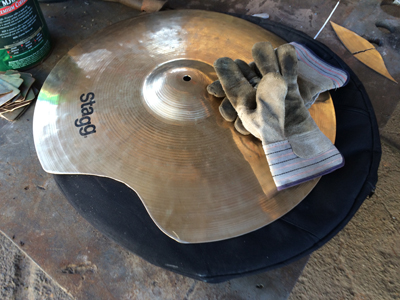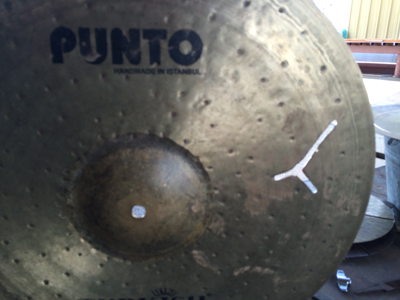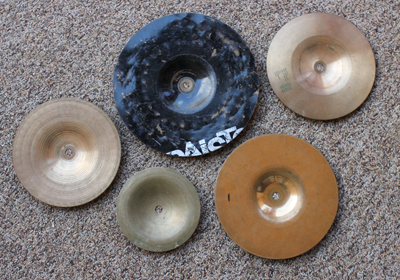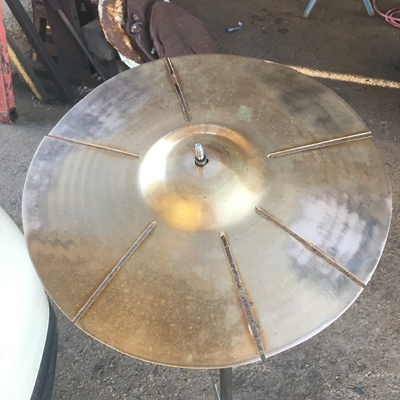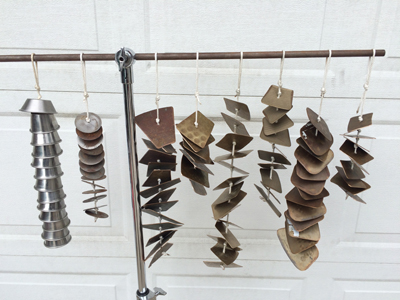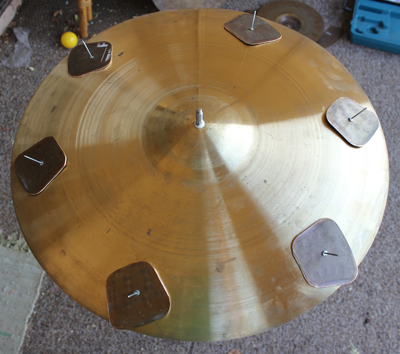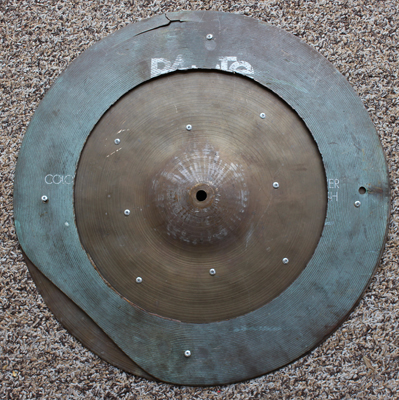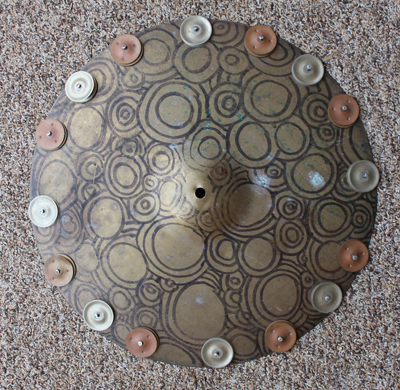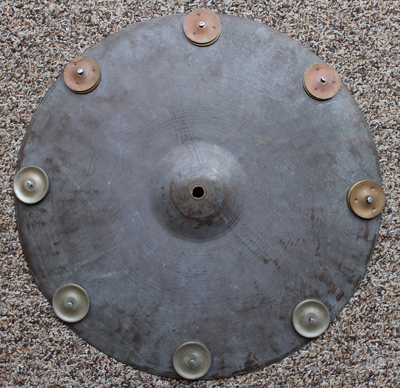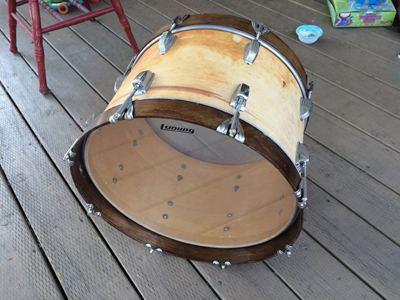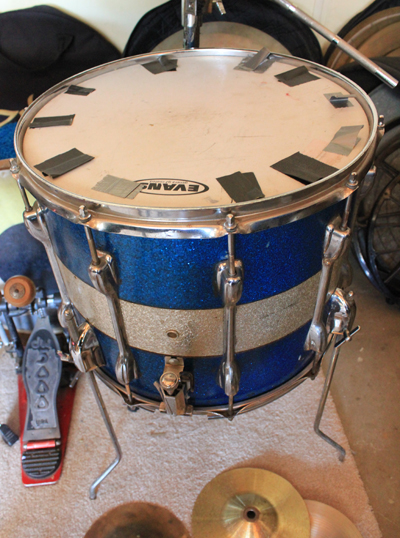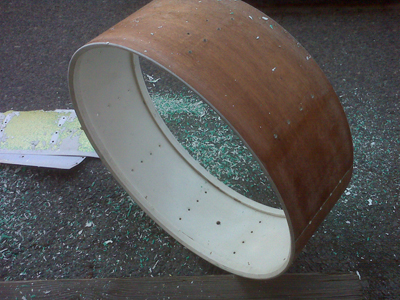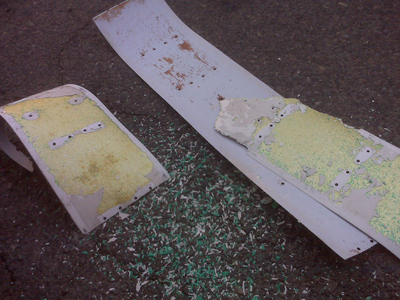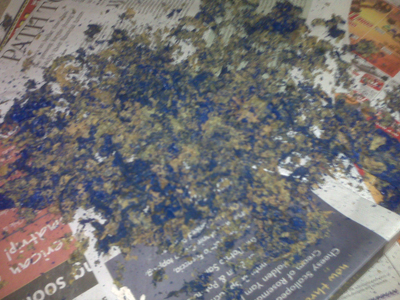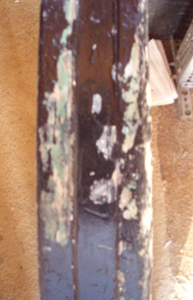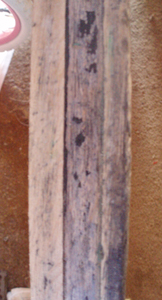|
Fall 2010 - i've been spending long nights in the garage with paint stripper, sand paper and a few old drums. Firstly, I've got two old bass drums, a 50's Slingerland 28" and a 70's Ludwig 28" that Marcos Fernandes gave to me. Both got stripped of their covering, and i've been painting stripping and sanding away. I'm planning on staining the Ludwig since it has such a nice mahoganny outer ply, i don't know what to do with the Slingerland. Also, have been stripping the hoops on the Ludwig of their black paint to stain them to a matching wood color. I also got Jasco on my bare skin for the first time, it was delightful.
The second project i've been working on is a early 60's Slingerland kit with a 24" kick, 16" floor and a 13" tom. I spent a lot of time last year on this and then shelved it for a while, and i'm back. I still can't decide whether to wrap them drums in gold sparkle or leave them as is. I'll let you know what i come up with.
|
